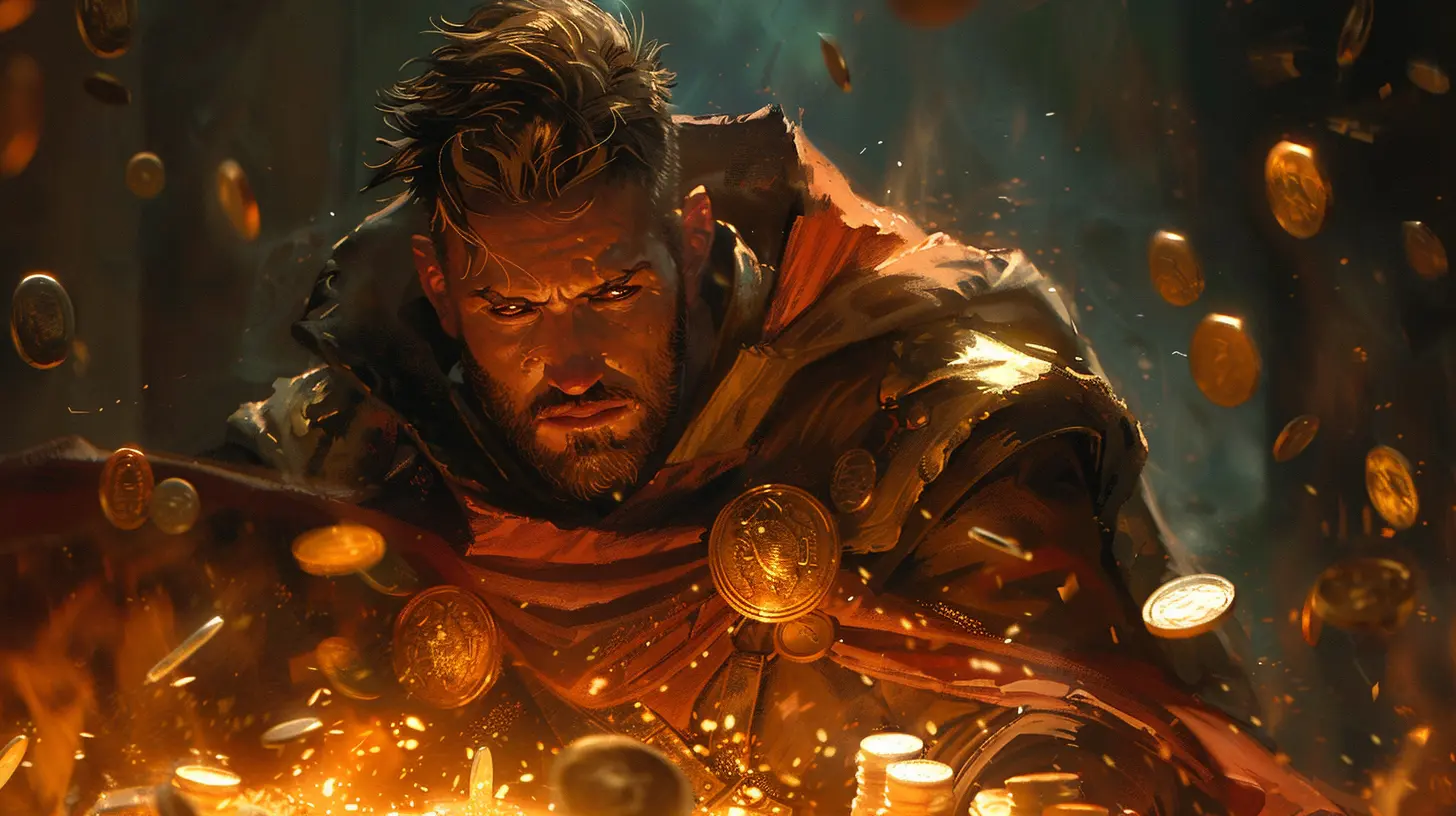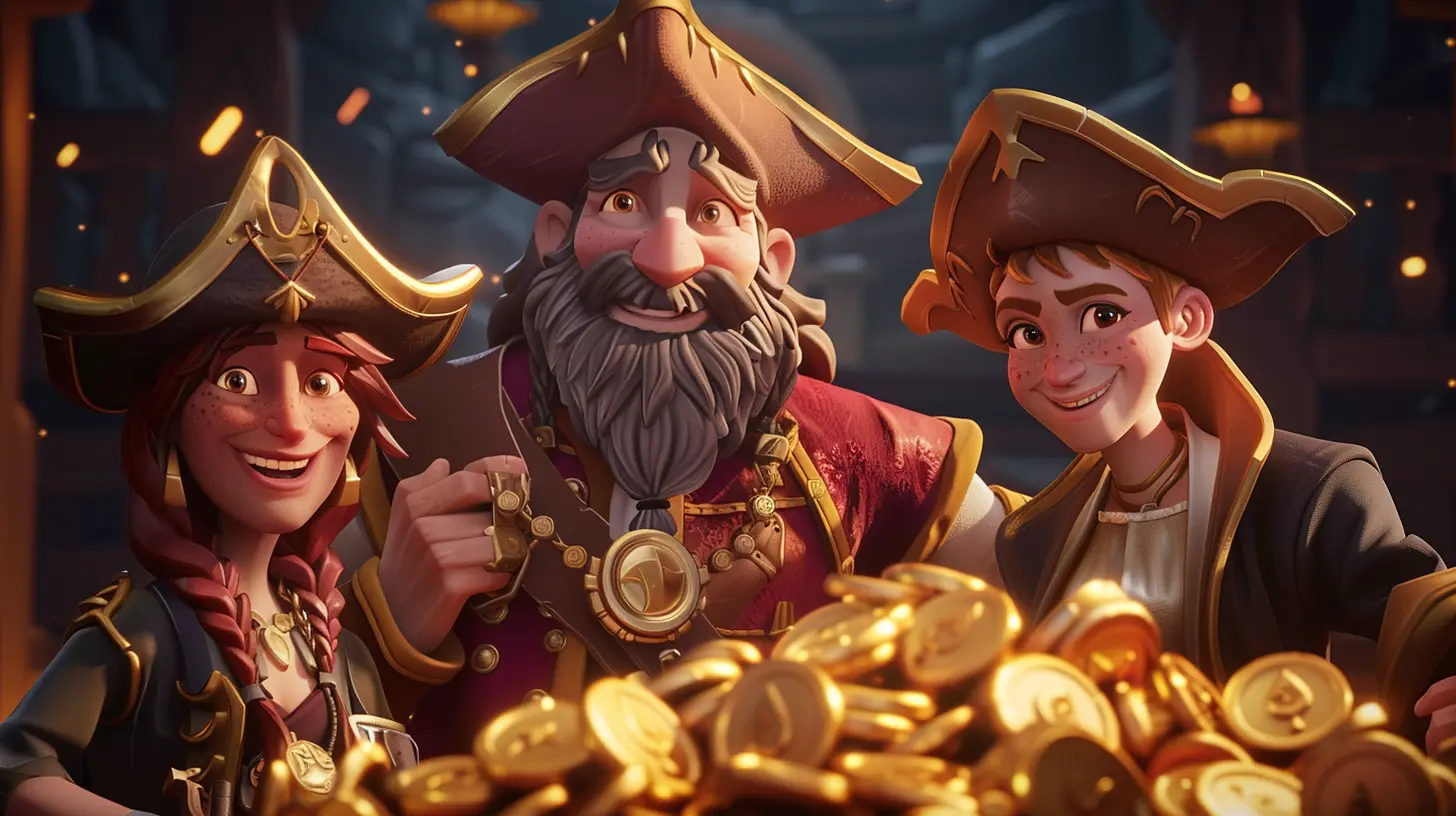How Some Developers Are Innovating Microtransaction Systems
2 May 2025
Microtransactions. Just hearing the word might make some gamers groan, right? Over the years, microtransactions have become a controversial topic in the gaming industry. For some, they're a convenient way to enhance gameplay. For others, they're public enemy number one, seen as a quick cash grab that a lot of developers exploit.
But here's the thing: not all microtransactions are bad. In fact, some game developers are flipping the script and redefining how microtransactions work. They're innovating in ways that feel fair, user-driven, and even, dare I say it, exciting! So, grab your controller (or keyboard) and let’s dive into how some brilliant minds are changing the game when it comes to in-game purchases.

The Evolution of Microtransactions
Before we jump into the innovations, let’s rewind for a quick history lesson. When microtransactions first appeared, they were pretty straightforward—players could buy cosmetic items or in-game currency. It wasn’t long before things spiraled out of control. Pay-to-win models crept in, loot boxes became a gamble, and gamers started feeling like ATMs.However, developers didn’t sit still. After a lot of backlash (and a fair share of lawsuits and regulatory scrutiny), the industry realized they needed to rethink the microtransaction formula. Enter innovation—a pathway to winning back players’ trust while still making bank. 
Fairness Over Greed: A New Approach
Nobody wants to drop $50 just to remain competitive in a multiplayer game. Thankfully, some developers get it. They’ve figured out that balancing fairness with profitability is key.Cosmetic-Only Purchases
The idea here is simple: microtransactions should be non-intrusive. Games like Fortnite and Apex Legends have nailed this concept. Players can buy skins, emotes, and other purely cosmetic upgrades. These purchases don’t enhance gameplay, so whether you pay or not, you're on a level playing field.By keeping items cosmetic-only, developers avoid the dreaded "pay-to-win" label. Players appreciate the choice without feeling forced into spending money just to stand a chance.
Battle Pass Systems
The Battle Pass is another game-changer—pun intended. Instead of random loot boxes, developers now offer tiered progression systems that reward consistent gameplay. For a one-time fee, players unlock a progression track filled with items they earn as they play. Games like Call of Duty: Warzone and Fortnite have popularized this model.What’s great is that Battle Passes feel like a win-win. Players earn what they pay for (no RNG nonsense), and developers get steady revenue streams. Everyone walks away happy. 
Community-Centric Innovations
Modern gamers want to feel like they’re part of something, not just exploited for profit. Savvy developers are figuring out how to integrate microtransactions in ways that foster community and engagement.Player-Driven Economies
Ever heard of games where players set the value of items? Yep, this is a thing, and it’s pretty brilliant. Take Warframe for example. In this free-to-play game, players trade items with each other using in-game currency that can also be bought with real money.This player-driven economy allows gamers to dictate the worth of rare items, making the system feel organic rather than top-down. Plus, the trading adds depth to the game, creating a vibrant, active community.
Crowdsourced Content
Some developers are outsourcing creativity to the players themselves. In games like Roblox, users can develop custom skins, assets, or even entire experiences, which others can purchase. A portion of the profits goes to the original creator, incentivizing creativity within the player base.This kind of system doesn’t just generate revenue; it strengthens the bond between developers and players. It’s like a partnership rather than a “pay us, or else” transaction. 
Rewarding Players for Loyalty
Let’s face it—nobody likes feeling like they’re throwing money into a bottomless pit. That’s why some developers have started rewarding loyal players who invest in their games.Currency Bundles with Extras
Instead of offering basic currency bundles, some games add perks to make the deal sweeter. For example, buying virtual currency might also unlock exclusive skins or double your in-game rewards for a week. It’s like getting fries with your burger—bonus points for value!Subscription Services
Games like World of Warcraft offer subscription systems where players get consistent perks for a flat monthly fee. These models take the sting out of frequent microtransactions by providing steady access to premium content.In fact, subscription services are popping up everywhere, from Xbox Game Pass to PlayStation Plus. While they aren’t microtransactions in the traditional sense, these services still represent a shift toward sustainable spending models, where players get more bang for their buck.
Transparency: The Game-Changing Ingredient
Why do loot boxes rub people the wrong way? One word: uncertainty. Nobody wants to gamble their money without knowing what they’re getting. That’s why transparency is becoming a cornerstone of new microtransaction systems.Item Previews
Before you buy, you should know what you’re paying for. Games like Dota 2 and Genshin Impact now offer item previews, so players can see exactly what they’re purchasing. Some games even display drop rates for rare items, reducing the sense of gambling.When developers remove the mystery, they foster trust. Players feel respected, and they’re more likely to invest in a game that doesn’t seem out to trick them.
Earnable Premium Currency
Another innovative trend is allowing players to earn premium currency through gameplay. While it may take longer to accumulate, this option lets everyone access premium features without pulling out their credit card. Games like Clash Royale strike this balance well.By offering both paid and earnable options, developers cater to all types of gamers, from casual spenders to those who prefer grinding for free rewards.
Microtransactions That Give Back
Can microtransactions benefit more than just the game developer’s wallet? Some companies think so, and they’re using in-game purchases to fund charitable causes.Charity Bundles
Several games have introduced limited-time bundles where a portion of the profits goes to charity. For example, Blizzard’s Overwatch has featured charity skins, with proceeds supporting breast cancer research.Not only do these initiatives make spending more meaningful, but they also reflect positively on the developers. After all, who wouldn’t want to save the world while saving the world in-game?
Is the Future Bright for Microtransactions?
So, what’s next? As gamers, we’re right to be skeptical—but it’s clear that developers are starting to listen. While there will always be cash-hungry companies pushing exploitative systems, forward-thinking studios are finding innovative ways to make microtransactions less painful and more player-friendly.By focusing on fairness, transparency, and community engagement, these developers are proving that microtransactions don’t have to be the villain in our gaming stories. Maybe—just maybe—they can even be the unsung hero.
So, the next time you see a microtransaction pop up, don’t immediately roll your eyes. Who knows? It might just surprise you.
all images in this post were generated using AI tools
Category:
MicrotransactionsAuthor:

Avril McDowney
Discussion
rate this article
4 comments
Selina Kane
Great insights on microtransaction innovation! It’s refreshing to see developers prioritizing player experience and fairness. Excited to see how these changes impact future gaming.
May 9, 2025 at 4:56 AM

Avril McDowney
Thank you! I'm glad you found the insights valuable. Exciting times ahead for player-focused innovations in gaming!
Sophie McHugh
Great insights on microtransaction innovation! It's crucial for developers to find a balance between monetization and player experience. Looking forward to seeing how these changes impact gaming communities!
May 5, 2025 at 4:36 PM

Avril McDowney
Thank you! It's definitely an exciting time for developers to innovate while keeping player experience at the forefront.
Yolanda Smith
Ah, yes, because nothing screams innovation like finding new ways to milk players' wallets. Microtransactions: the true art of turning games into pay-to-play playgrounds. Bravo, game devs, bravo!
May 4, 2025 at 3:31 AM

Avril McDowney
Thank you for sharing your perspective! While microtransactions can be controversial, many developers are exploring creative methods to enhance player experience without compromising value. Your feedback is important in this ongoing discussion.
Rayna Reyes
Love seeing developers shake things up with microtransactions! Innovation can lead to fairer, more fun experiences. Let's celebrate creativity in gaming and support positive changes! 🎮✨ Keep it up!
May 2, 2025 at 3:53 PM

Avril McDowney
Thank you for your enthusiasm! It's great to see positive perspectives on innovation in microtransactions. Here's to more creative and fair experiences in gaming! 🎮✨



